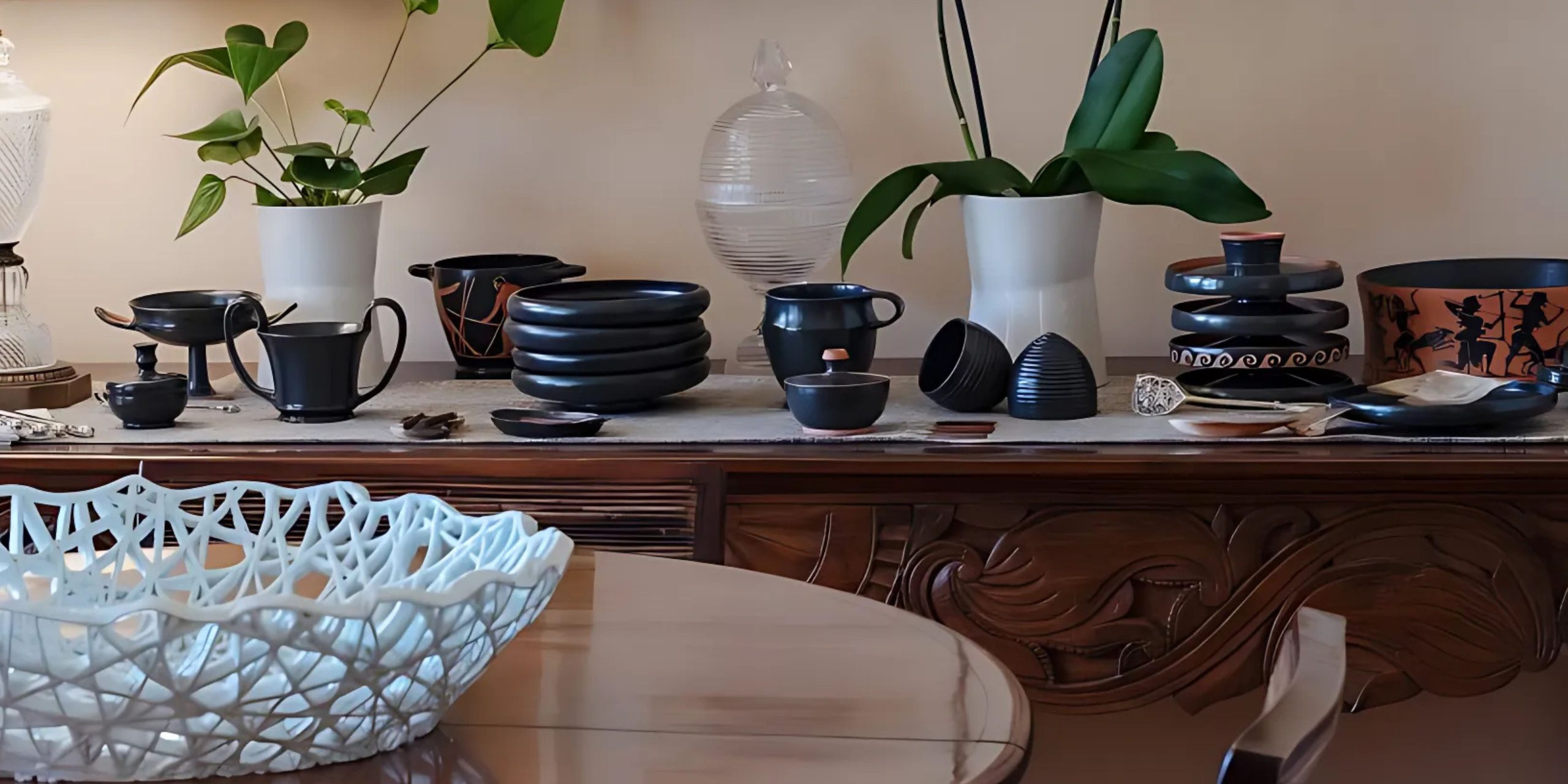
The types of pottery in ancient Greece stand as remarkable testaments to the artistry and cultural richness of this enduring civilization.
Key Highlights
- Ancient Greek pottery was widely produced in centers like Attica and Corinth, with additional sites across the Greek world.
- Clay served as a readily available, affordable material for crafting everyday vessels such as amphorae, pelikes, and hydriae.
- Some vessels were specially designed for mixing or cooling wine, including kraters, psykter, and lebes.
- Tableware like oenochoe, kantharos, kylix, and skyphos was used for serving and drinking, often showcasing mythological and daily-life scenes.
- Decorative motifs on these pieces offer valuable insights into ancient Greek society, art, and storytelling.
From everyday clay vessels to elaborate ceremonial pieces, Greek potters crafted objects that not only served practical purposes—such as storing and transporting goods, mixing and cooling wine—but also told vivid stories through their decorative motifs. Each pottery style reveals a glimpse into ancient Greek life, mythology, and social customs, reflecting the innovation and creativity of potters across various regions.
Clay vessels are the remains of ancient Greek civilization, which have been preserved in greater numbers than other ancient works. In ancient times the most important centers for the production of ceramic products were Attica, Corinth, while other centers are located in Boeotia, Euboea, the Cyclades, eastern Greece, and Laconia. Workshops of classical times have been found in Etruria, as well as in places in southern Italy and Sicily. Unused decorative pottery for storage, transport of liquids, cooking, and other household purposes, would be produced in almost all regions of the ancient world.
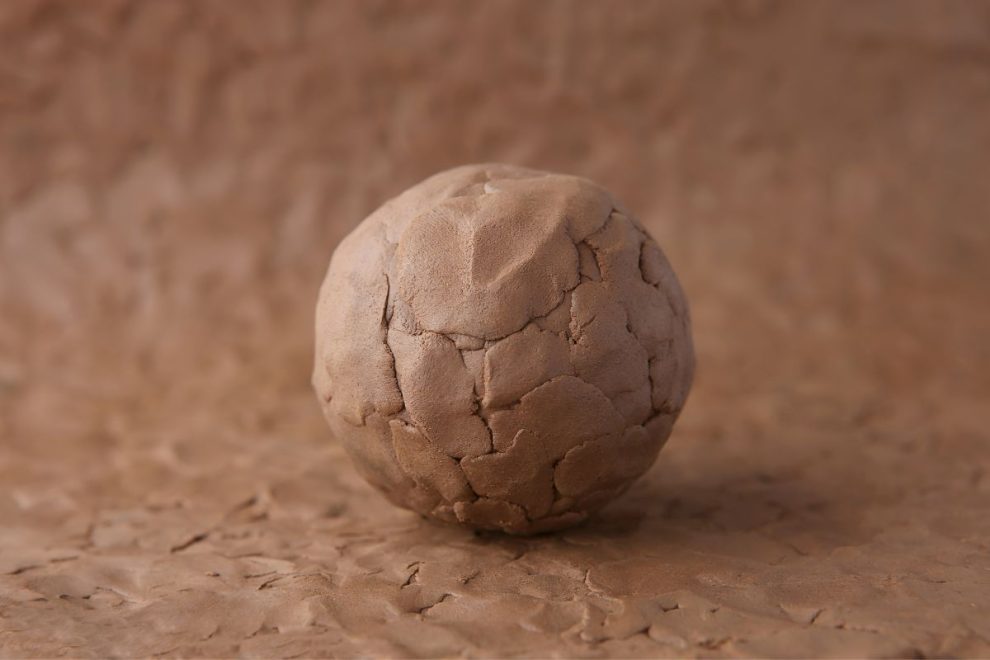
Clay as the Primary Raw Material
In Greece, the places where one could find them are abundant. Clay was a convenient and economical material in contrast to copper alloys and precious metals and was therefore used to make utensils for everyday use, such as vessels to store and transport oil, wine, and water, for cooking, but also for serving at the table.
However, earthenware pots were often made of elaborate decorations that were used on special occasions. From the performances that decorated the vases, we collect information about public and private life, the world of theater, mythology.
Shapes, Uses, and Names of Vessels
Vases were necessary both in everyday life, as utensils, and in ceremonies as offerings or gifts, or even as luxurious utensils for displaying financial prosperity. Although the shape of each vase was closely related to its use, decoration always played an important role.
It is also characteristic that, although over the years many ceramic centers were created in different parts of the ancient Greek world, most of the shapes are common. As for their names, in most cases, we know the ancient name, as it is mentioned in the texts of ancient writers.
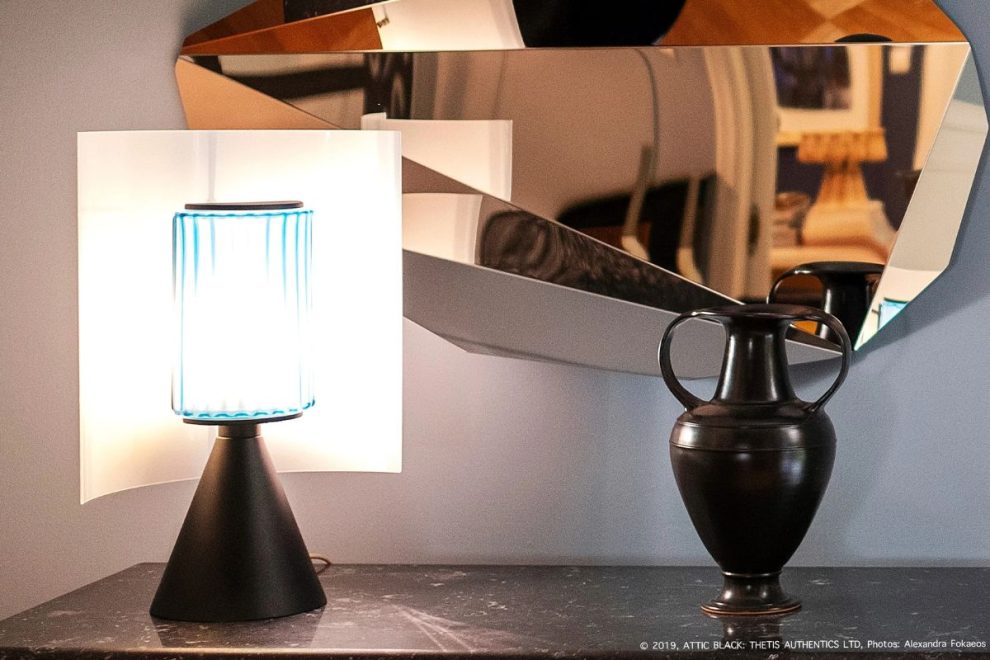
Vessels used for Storage and Transport
Types of pottery in ancient Greece used for storage and transport.
To shop our functional vases click here.
Amphora
Amphora The name of the vase comes from the words amphi + fero. It is a large vessel with two vertical handles that start at the rim and end at the body. They were used to store oil, wine, small fruits but also to transport water.
We distinguish two main types of amphorae:
- a) The single amphorae with neck and body that form a single curve
- b) The amphorae with a neck. In this type, the neck stands out from the body. This category includes Panathenaic amphorae and Pointed amphorae, which have cylindrical handles and were widely used for sea transport in antiquity since they could be stored in an upright position.
Pelike
A storage vessel, a kind of amphora, the largest diameter of which was at the bottom. It first appeared around 520 B.C. with the Attic red-figure technique. Due to the high stability and the low center of gravity of the vessel, traders stored expensive aromatic oils. The name pelike is not ancient Greek, but it was named by archaeologists. In ancient times the vessel had various names, such as kylix or basin.
Stamnos
A vessel is used to serve wine and to store liquids or to mix wine and water. It has a narrow base that widens as it rises upwards ending up in a relatively wide neck. With two handles on the sides and cover.
Hydria
A water transport vessel with three handles, two horizontal and one vertical. Two for transport and one for serving.
There are two types of hydria:
a) In the first type, the different parts of the vessel are distinguished (base, abdomen, shoulder, neck) and it is called a hydria with a neck. The vertical handle starts at the shoulders of the vessel and ends at the rim.
b) The second type, invented at the end of the 6th century, has an undivided shape, while the vertical handle is smaller and is located approximately on the shoulders of the vessel. This type is called “hydria-kalpis”.
Apart from its use as a vessel for transporting or serving water, the jug was also used as a ballot box or even as an ashtray or urn.
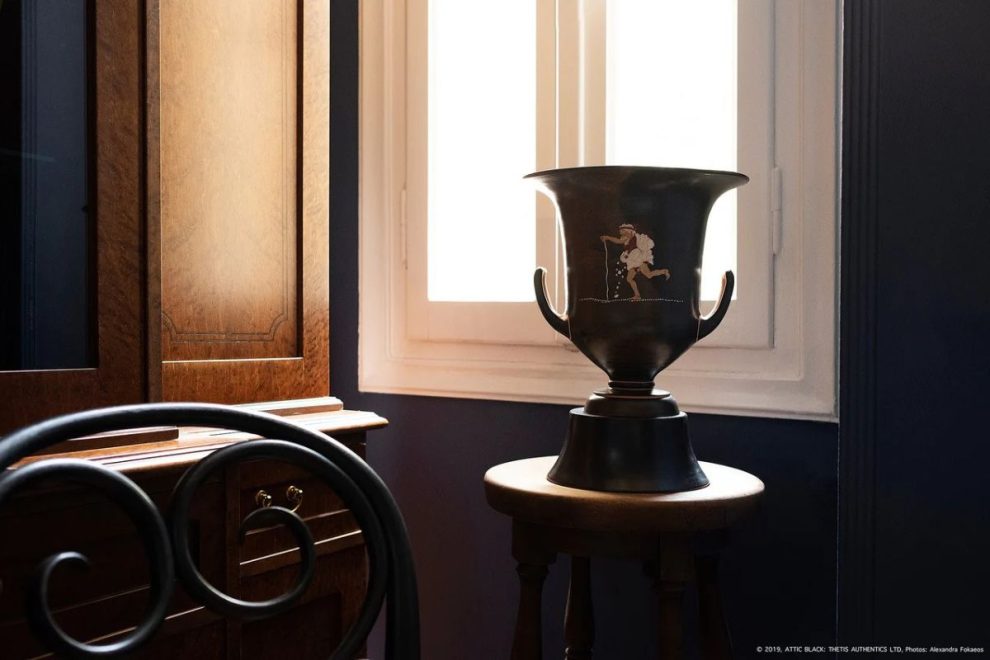
Vessels used for Mixing and Cooling Wine
Below you will find the types of pottery in ancient Greece used for mixing and cooling wine.
To shop our functional vases click here.
Krater
The ancient Greeks rarely drank pure wine, they diluted it. The krater was the vessel in which water was mixed with wine. Over the years there were many variations of the vessel but its main features were the narrow base the wide body and the two handles.
We can divide the kraters into four types, depending on the handles and the body:
a) column-krater
b) volute-krater
c) calyx-krater
d) bell-krater
Psykter
A wine cooling vessel. The psykter was a vessel with a narrow cylindrical body that widened as it ascended and took the shape of a bulb to reach a narrow rim. They filled it with cold water and placed it in the crater, to keep the wine cool.
Lebes
The lever was a deep and open vessel, usually without handles, with a large curve in the shoulders narrowing at the neck, which was low and had protruding lips. It was used for mixing wine (like the krater) or for cooking, especially the copper ones. It rested on an independent base or tripods. The vase depictions show that it was given as a prize in competitions or that it was used as a serving vessel at banquets.
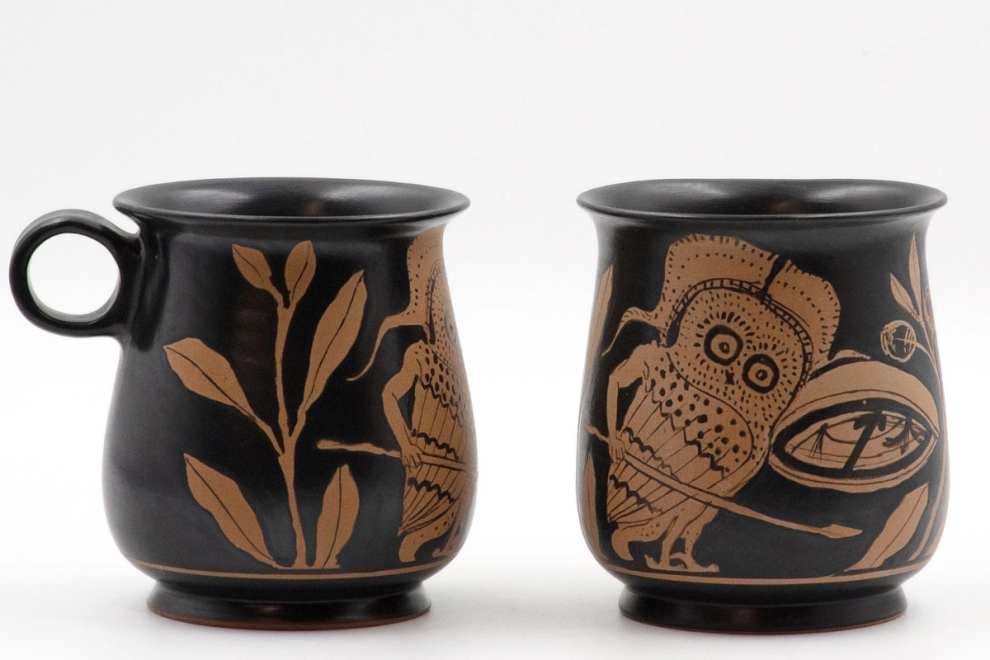
Tableware
Below you will find the types of pottery in ancient Greece used for tableware.
Click here to shop our functional tableware.
Oenochoe
A vessel with which they drew the wine from the krater and filled the wine glasses.
The name of the vase comes from the words oenos + cheo. It is one of the most common vessels and is distinguished for a variety of different types. There are 8 types while John Beazley distinguishes 10 different types.
The mouth may be clover-shaped or circular. The body in other cases is slender while in others it has the shape of a bulb. The neck and shoulder can be separate or form a single curve with the body.
It is used to pump or serve wine and we find it as a gift in the tombs along with the lekythos.
The main types are distinguished by the following characteristics:
a) Slim body with a single curve from the mouth to the base. This type is usually called an olpe.
b) Slim body with a shoulder that slightly stands out from the body.
c) Bulb-shaped body with a single curve from the mouth to the base, with a clover-shaped mouth, low leg, and low handle. This type is also called “chous”; it was used during wine competitions.
d) Bulb-shaped body with separate neck and circular mouth
e) Bulb-shaped body with separate neck and clover-shaped mouth.
Kantharos
A utensil with many variations is the kantharos. It is a type of glass whose main features are the slender leg with the wide body and the two handles that start approximately from the base of the body, exceed the height of the lips, and return curved close to the height of the lips. In the representations of the vases, the god Dionysus or Hercules usually holds it in his hand.
We distinguish three main types:
Type A kantharos is distinguished by the high leg, which is distinguished from the body by a ring. The body is deep. The curved vertical handles start low from the body, exceed the height of the vessel, and return forming a loop, to end at the rim.
In type B kantharos the vertical handles do not exceed the height of the vessel. They start low on the body and end at the rim. The cylindrical walls of the body curve slightly outward at the end of the vessel. The lower leg is connected by a ring to the body and ends at a disc base.
The handles of type C kantharos are similar to those of type A. The deep concave body is united with the rim. The lower leg is connected by a ring to the body and ends at a disc base.
Kylix
One of the most popular glasses was the kylix. It was used mainly in banquets and many times the hosts ordered them from the potters with specific performances. Its spread exceeded the Greek borders and was one of the products that were exported to other nations, mainly to the Etruscans.
Skyphos
It is a deep vessel with little or no stem and two handles.
There are two types of handle shapes:
a) Type A is characterized by high curved handles placed below the rim.
b) Type B has horizontal handles at the level of the rim.
Let us know which style is your favorite and upon request, we will create a museum-like vessel that will elegantly blend in with your décor.
